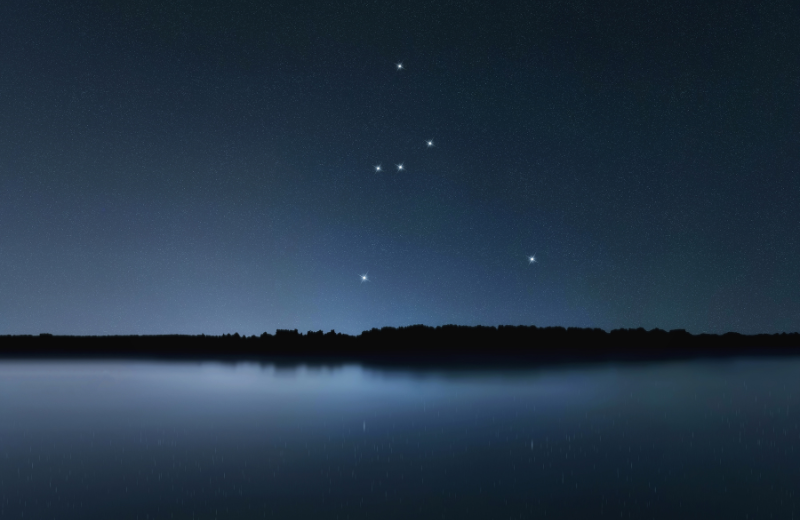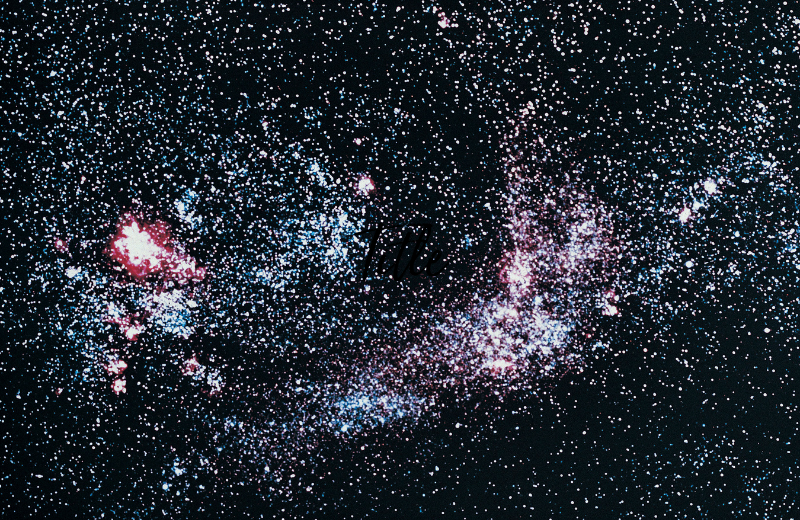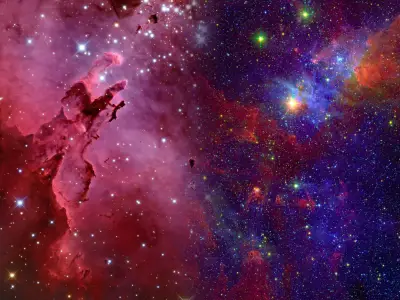For many, constellations offer a way to connect with stories, legends, and the universe itself. One such constellation, often overlooked due to its relatively dim stars, is Hydrus. This guide shares the story, appearance, and stars of Hydrus, as well as where and when you can spot it.
Jump To:
Recommended for you!
Best SellersWhat is the Hydrus Constellation?
Hydrus is a small constellation in the Southern Hemisphere, introduced in the late 16th century by the Dutch astronomer Petrus Plancius. Often confused with the much larger and more famous constellation Hydra, Hydrus is distinct in its own right.
But what exactly is Hydrus? The name comes from the Greek word for water snake, and fittingly, Hydrus is sometimes referred to as the lesser water snake, while Hydra is known as the greater water snake. Hydrus lies close to the South Celestial Pole and is part of the constellation family associated with the Southern Hemisphere.
What Does Hydrus Look Like?

Hydrus isn’t a particularly bright or striking constellation when compared to more famous formations like Orion or Cassiopeia. However, its faint collection of stars forms a simple yet charming triangular shape. To the naked eye, it may appear unassuming, but with some effort and a clear night sky, you can spot its delicate structure.
While it lacks a standout, brilliant star, Hydrus’s simplicity is part of its appeal. In terms of appearance, Hydrus is best appreciated with a star map or through binoculars, which can help you trace its lines and fully understand its place in the night sky.
How Far is Hydrus from Earth?
Hydrus’s closest star is Beta Hydri, located about 24.4 light-years from Earth. By comparison, Alpha Centauri, one of the closest stars to Earth, is about 4.37 light-years away. This makes Beta Hydri one of the relatively nearby stars, in astronomical terms.
The Hydrus Constellation Myth
The mythological significance of Hydrus is less well-known compared to other constellations. While Hydra, its larger counterpart, has an extensive backstory in Greek mythology—often linked to the multi-headed serpent defeated by Hercules—Hydrus’s myth is not tied to ancient tales. Instead, it was introduced during the age of exploration, a time when astronomers began mapping the southern skies.
The name ‘Hydrus’ still carries a connection to Greek mythology, symbolising a serpent or water snake, though it doesn’t have a specific legend attached to it.
What is the Meaning of the Hydrus Constellation?

The name Hydrus, derived from the Greek word "hydros," meaning water, reflects its association with water creatures, particularly serpents. It symbolises the snake, but unlike its northern hemisphere cousin Hydra, it represents a smaller and more elusive water snake. This symbolism ties into the constellation’s subtle and less visible presence in the sky.
Hydrus’s Stars
Hydrus may not boast the brightest stars, but there are a few notable ones worth mentioning.
- Beta Hydri: As the brightest star in Hydrus, Beta Hydri is a yellow giant star, easily visible in the night sky despite its moderate magnitude. It’s also one of the oldest stars known, making it a fascinating object for study.
- Gamma Hydri: Another notable star, Gamma Hydri, while fainter than Beta, contributes to the constellation’s overall structure.
- Alpha Hydri: Although not the brightest, Alpha Hydri is a key part of the constellation’s triangular shape and adds to its unique charm.
Nebulae in the Hydrus Constellation

Hydrus, being a relatively small and faint constellation, isn’t known for having any particularly prominent nebulae. However, its proximity to the Large Magellanic Cloud (LMC) means it's near one of the most interesting nebulae in the sky. The LMC contains numerous nebulae that are often observed by astronomers exploring this region of space. Though these nebulae aren’t technically part of Hydrus, their closeness adds a layer of intrigue for anyone interested in stargazing.
Finding Hydrus in the Sky
Hydrus is best viewed from the Southern Hemisphere, particularly during the months of October to December when it reaches its highest point in the night sky. If you're in locations such as Australia, New Zealand, or South Africa, these months offer the best opportunity to spot this constellation.
Locating Hydrus
Hydrus lies near the South Celestial Pole, just beneath the larger constellation Eridanus. To locate it, it’s helpful to have a star map or use binoculars to trace the faint triangular shape of Hydrus, as its stars are not particularly bright.
Viewing Hydrus with Binoculars or a Telescope
- With Binoculars: Due to its faint stars, Hydrus may be hard to spot with the naked eye. Binoculars will help bring the constellation’s main features into clearer view.
- With a Telescope: A telescope offers a more detailed view of the stars within Hydrus, especially the brighter stars like Beta Hydri. It’s a rewarding experience for those keen on observing lesser-known constellations.
The Best Viewing Conditions
For the best chance of seeing Hydrus, you’ll need a dark, clear night, far from city lights. Light pollution makes it harder to spot this faint constellation, so seek out remote locations with minimal interference from artificial lighting. A moonless night will also improve visibility, allowing you to appreciate the subtle beauty of Hydrus in the southern sky.
Recommended for you!
Best SellersFun Facts About Hydrus
Hydrus may not be the most well-known constellation, but it holds a special place in the night sky. Here are some intriguing facts about this lesser-known water snake:
- A Modern Constellation: Hydrus was one of the first constellations introduced after the discovery of the southern skies, making it a relatively new addition compared to ancient constellations like Orion and Hydra. It was first catalogued in the late 16th century by Dutch astronomer Petrus Plancius during the Age of Exploration.
- Faint Stars: The stars in Hydrus are relatively faint, with none brighter than magnitude 2.8. This makes spotting Hydrus a rewarding challenge for stargazers, especially those with telescopes or binoculars.
- Neighbouring Galaxies: Hydrus is located near the Large and Small Magellanic Clouds, two satellite galaxies of the Milky Way. These galaxies are fascinating objects in their own right and provide an extra layer of interest when observing the region around Hydrus.
- Hydrus vs Hydra: Though often confused with the larger constellation Hydra, Hydrus is entirely separate. Hydra is rooted in Greek mythology and spans much of the sky, whereas Hydrus was introduced during the Age of Exploration and is much smaller and subtler in appearance.
Study Astronomy for £29
The Hydrus constellation is a stunning and significant part of the night sky, offering beauty and rich history. If you're inspired to delve deeper into the wonders of astronomy, why not explore the Astronomy Diploma Course with Centre of Excellence? Whether you're a beginner or someone with more experience, this course will guide you through everything you need to know about the stars, constellations, and galaxies. And for a limited time, you can enrol for just £29!













